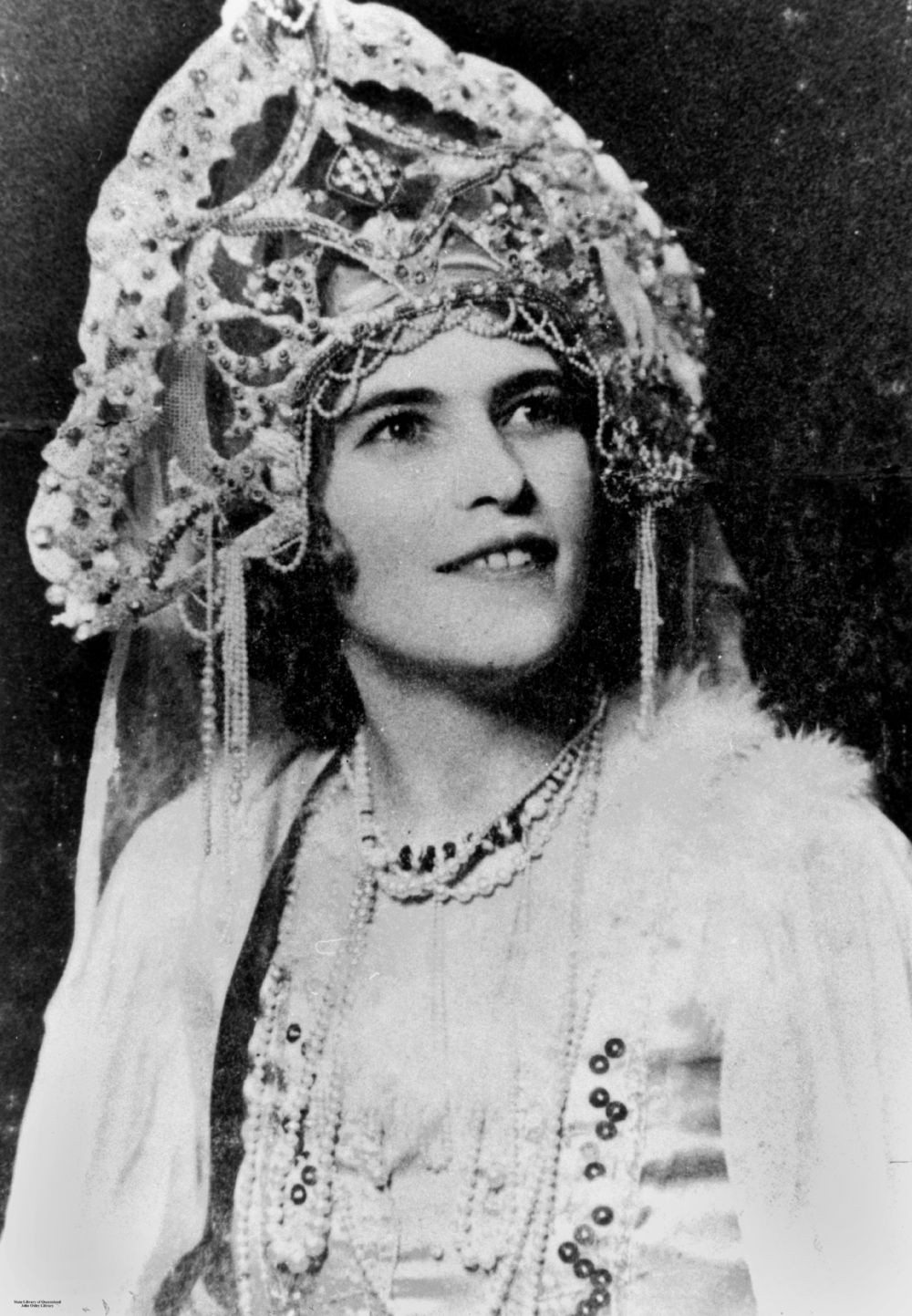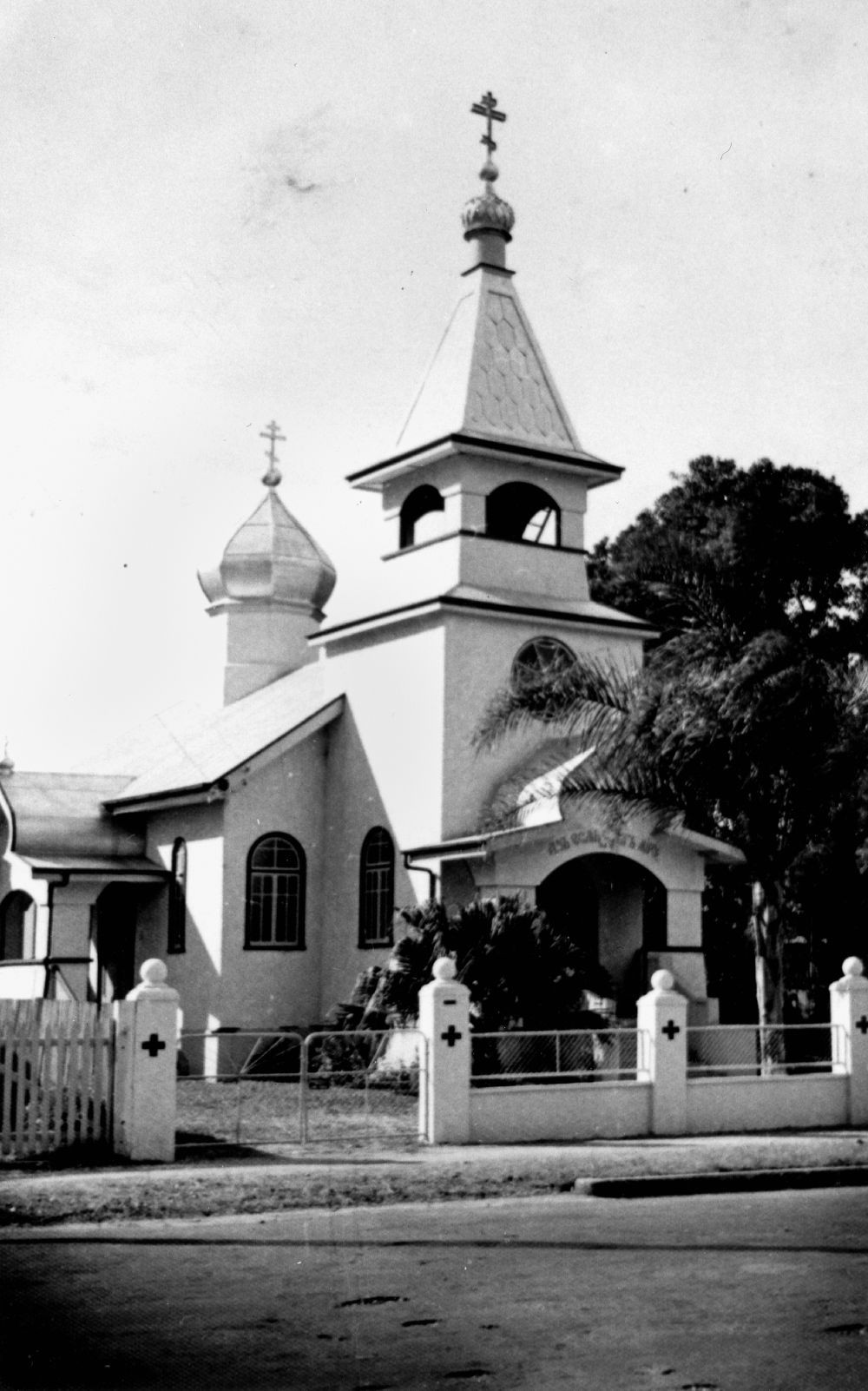Well, at least it is according to the volunteers who run the Russian Club of Brisbane, the first and oldest Russian Club in Australia. Built on Trafalgar Street, Woolloongabba in 1928 by “White Russian” refugees of the civil war, the club was the second Russian community institution to be built in Australia.
The first was the iconic peach-coloured St Nicholas Russian Orthodox Cathedral, built on Vulture Street just a few years earlier, on the other side of the Gabba stadium. Today the club is one of many Russian institutions in Brisbane, including two Russian clubs and three Russian Orthodox parishes and one Russian Deli in Woolloongabba alone. Today the Russian Club of Brisbane (known to its friends as The Little Russian Club) is a volunteer organization dedicated to celebrating Russian heritage in Australia, hosting Russian cultural and food events, workshops, and talks for all Australians interested in Russian culture.

Catherine Meek (nee Gubar) dressed for a costume party at the Russia Club, Brisbane, ca. 1935. John Oxley Library, State Library of Queensland. Neg 92381
The Little Russian Club recently celebrated Brisbane as the 2018 capital of Russian heritage in Australia by presenting the inaugural Russian Heritage Week - May 14 – 20, part of the National Trust’s Australian Heritage Festival - a week of free talks and tours including a special “white glove” State Library tour of historical artifacts relating to Russian history in Brisbane.
Why was Brisbane chosen to host Australia’s first Russian Heritage Week? Brisbane was a centre of early Russian immigration, receiving some of the very first Russians to Australia. Queensland’s café scene was brought to life by Basil Naggih who installed Brisbane’s first espresso machine in his café, which itself was one of the first cafés in Brisbane. A few years later he founded Brisbane’s first coffee roastery.

Russian Orthodox Church of Saint Nicholas, Woolloongabba, Brisbane, ca. 1936. John Oxley Library, State Library of Queensland. Neg 125727
The State Library of Queensland boasts a number of historical items related to Russian history in Queensland. Gowns designed by one of Australia’s most significant fashion designers of the 50s and 60s, Paula Gubar, a Russian immigrant to Brisbane, are held in the Queensland Museum, and many buildings relating to early Russian immigration in Queensland are heritage protected by the Queensland Government, including St Nicholas Cathedral and the famous Mikonoshin “Fairy House”. These are just a few of the ways that Brisbane’s history is dotted with Russianness. These dots and others can be explored on the Russian Club’s website, where a Russian Heritage Map of Brisbane is free and accessible to all, and at the State Library, where priceless photos, diaries and letters are testament to the contribution of Russians to Brisbane’s colourful and wonderful multicultural life.
Guest blogger - Seraphima Onofrei from the Russian Club
Further reading
- Russians in Queensland (blog story from 2010)
Comments
Your email address will not be published.
We welcome relevant, respectful comments.